We’re firm believers in the power of cross-pollination. When we share knowledge, we get a chance to reflect on our own work and challenges – and all become better experience creators as a result.
So for this special Campfire, we invited five WXO Members from across the globe to share five incredible recent projects in five (ish) minutes each. While each project is beautifully unique and specific, we think each one has takeaways for experience creators across sectors to consider and apply in their own work, whether they take the form of wisdom on how to make miracles happen in a limited space and time, or the differences in designing immersive experiences in Eastern and Western cultures.
Read on for insights from:
1. Frances Vieras Blanc: Co-Founder and CEO at Eat The Cake Studio, on Cabinet of Curiosities, a showcase of its history-based immersive universes in a very modern Parisian hotel. She discloses how to transform spaces with minimal magic and create immersive experiences in the most unlikely places.
2. Melinda Lauw: Director, Experience Design at Lucid Experiences, an immersive experience company based in Singapore. She explains the differences between operating in the US and Singapore markets.
3. Sophie-Alicia Shaw: Creative Producer at Stormjar, on Static Sea, a horror mystery that unravels both online and IRL on Flat Holm Island in the Bristol Channel. She shares the hybrid element of the project, how it’s come to fruition so far, and how you can get involved.
4. Brendan Brown: VP Head of Strategy at George P Johnson, sharing more on a recent workshop he designed and facilitated for 4A’s Stratfest. He covers the concepts, tactics and tools they used to open a window into the experience field and lay the foundation for attracting new talent.
5. Justin Bolognino: Founder and CEO of META, on Spirit Lake, an immersive art experience that took place for the 10th anniversary of Hulaween festival. He talks about storytelling with META-linear narratives.
1. Immersive Alchemy: Transforming Spaces With Minimal Magic
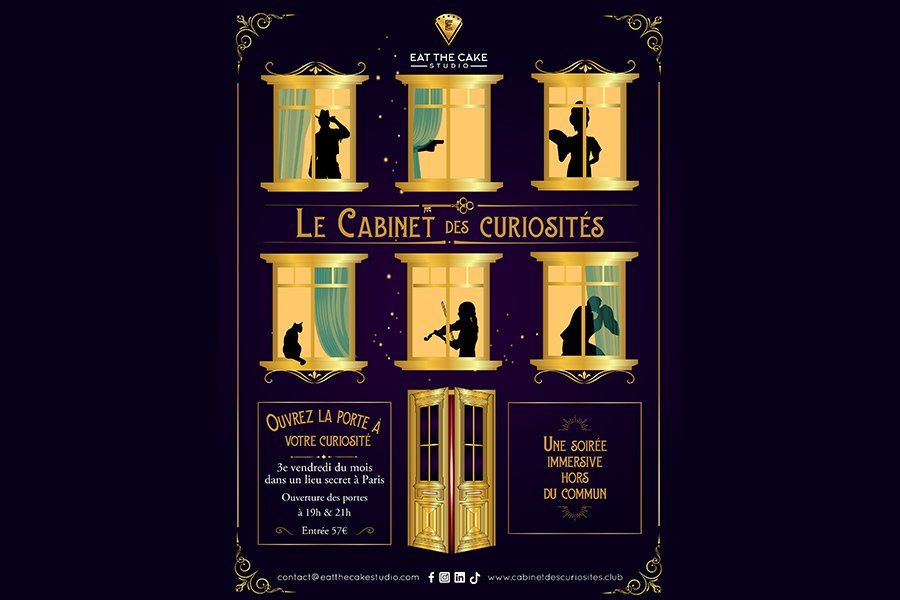
Two years ago, Frances Vieras Blanc of Eat The Cake Studio was asked by a decidedly modern Parisian hotel to throw an event to showcase its four immersive, history-based experiences that took in time periods including Versailles, Western, a 1920s speakeasy, and a travelling freak show. Vieras Blanc and her team only had 5 hours to transform each contemporary hotel room into a little slice of each time period, complete with themed food and drinks and character actors.
The final concept was a roaring success, and they realised that there was potential to sell the experience concept to hotels as a novel way to showcase their rooms, create an emotional connection with their brand, and change the way people interact with their spaces. They decided to set up another showcase aimed at hotel managers, this time using private rental apartments.
The evolved concept, The Cabinet of Curiosities, would be a more elegant take with a catalogue of 20 characters, united by the narrative thread of Madame X, a time-travelling image fixer. The plan was to showcase it to hotel managers, but when they cancelled days before the show they pivoted into a public experience and playtested on friends and other audiences. The experience eventually ran out of private apartments for a season, with guests exploring 3 rooms and 3 characters across 1 hour 30 minutes and with matching food and drink, with the characters changing each month.
In order to make the experience a success, they faced a series of constraints:
- The apartments were resolutely modern
- They didn’t know exactly which space they would be able to use until 2 days beforehand
- They had to set up and break down the experience in just one day
- There was no space to put the existing furniture, they couldn’t always take down wall decorations, and they couldn’t get it dirty or make too much noise
To get around this, they came up with a few clever solutions:
- Hiding the furniture with fabrics
- Printing their own art to cover what’s on the wall
- Making use of lighting, assigning a colour to each room, and ambient music to set the tone
- Creating pockets of decor rich in storytelling thanks to small objects
- Having a food theme for each room to evoke all 5 senses
In addition to the physical design, the team leaned heavily on the storytelling to create these miniature worlds. Participants were given brand new names as soon as they arrived, assigned based on positive emotions that they would incarnate, e.g. delight, surprise, seduction. This light role-playing is an example of “roleless roleplay”. They had no idea what was behind the door, except for teasers on the key card, and were given a skeleton key at the end of evening to unlock VIP surprises if they came again, as well as a Catalogue of Curiosities outlining what they’d missed, inspiring them to return.
So what can we all learn from this experience?
- When designing this kind of experience, you need to be very adaptable in a short time frame.
- Select the space that best fits your needs and design from there.
- Learn to use modular building techniques.
- Fabrics, music and lighting are your friends!
- People’s imaginations will fill in the blanks – storytelling is key.
- F&B gets people on your side.
- Find ways to use your universe to promote what you do – Vieras Blanc created ads for personalised experiences for private events, but kept this marketing in-world, grabbing people in the “hot moment”).
- Don’t panic! It’ll work out in the end.
2. The Difference Between Experiential In Eastern & Western Cultures
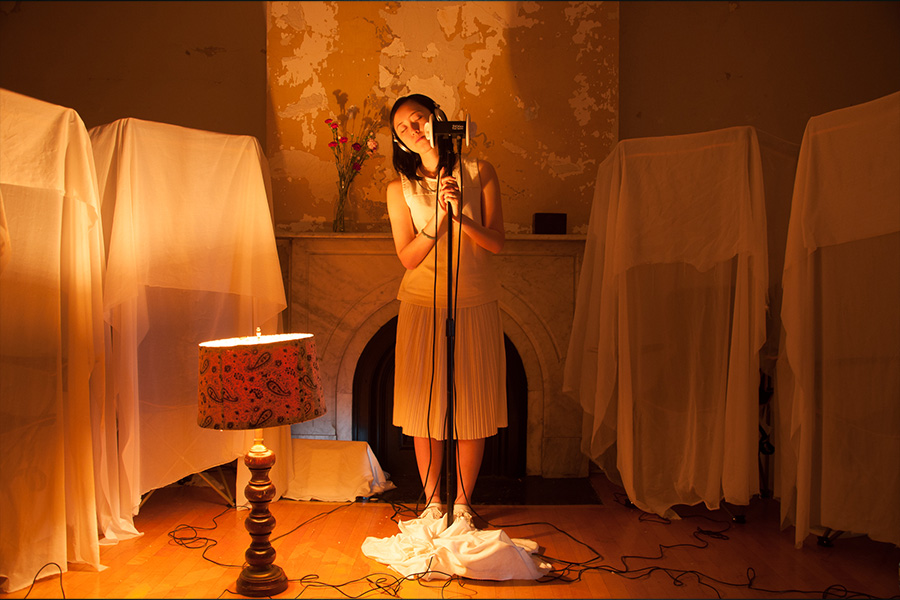
Melinda Lauw is probably best known for her work on projects in the US – namely Whisperlodge, an ASMR production company billed as “an unusual mix of theatre and therapy” that she co-founded in 2016, and The Museum of Ice Cream, where she also helped to design the first international location in Singapore.
In 2020 she moved from the US to Singapore and started working for the start-up immersive agency Lucid, one of very few in the country. While here, she worked on the following experiences:
- Otah & Friends: a family-friendly escape room created to accommodate pandemic limitations around the number of people in a gathering.
- Wellness Festival Singapore 2022 & 2023: an experiential, free festival with installations and live programming created for the tourist board.
- Stranger Things: a retail-based experience pop-up with fewer live performers than the US and UK shows which ran for 3 months.
- Lucid Immersive Summit 2023: a first for the region, drawing around 200 guests and speakers from Meow Wolf, Punchdrunk, TeamLab and No Proscenium.
- LKY: The Experience: over 20 immersive rooms following the story of Lee Kuan Yew, Singapore’s founding father, in a way that was more engaging for Gen Z and younger people.
Reflecting on her work in both destinations, Lauw has observed several key insights.
- Singapore is a young nation where immersive is super-nascent. The definition of immersive/experiential is still very vague: no-one knows the difference between immersive and interactive theatre, for example. There are few local creators and businesses, and audiences aren’t as open to immersive experiences. It’s also a more introverted culture where people are not used to talking to strangers, so experiences that require a lot of audience participation may not fly – they want entertainment that is easy and family-friendly. Finally, they’re not used to paying high prices for experiences, and things like theatre and museums are usually subsidised by the government.
- The Singaporean market is small and reliant on tourism for business sustainability. Even the biggest projects are compact compared to those in the US. There is a 5.9m population, of which 3.6m are citizens, so any production has to target tourists to be sustainable. Local immersive creators do pop-ups, but few of them become permanent or semi permanent.
- There’s a high cost of production. Everything is imported, there’s limited talent, and rent is a killer! This means that a lot of immersive productions end up going into co-sharing agreements with the landlord or venue stakeholder, as it’s too expensive and risky to just rent.
- However, it’s safe and English is widely spoken – so it’s easy for foreign brands to set up here. There’s also strong branding in the Singapore name. Foreign IPs often use Singapore as proof of concept to expand around the region to markets like Thailand and Indonesia.
- Government involvement and support is prevalent, necessary and quite accessible, especially if you have a local person on your team – it’s not just driven by ticket sales and revenue like the US. If you have connections to the tourist board or government and have similar aims, it can open doors to venues and funding that aren’t accessible to private companies.
3. Turning Real-Life History Into An Epic Experience
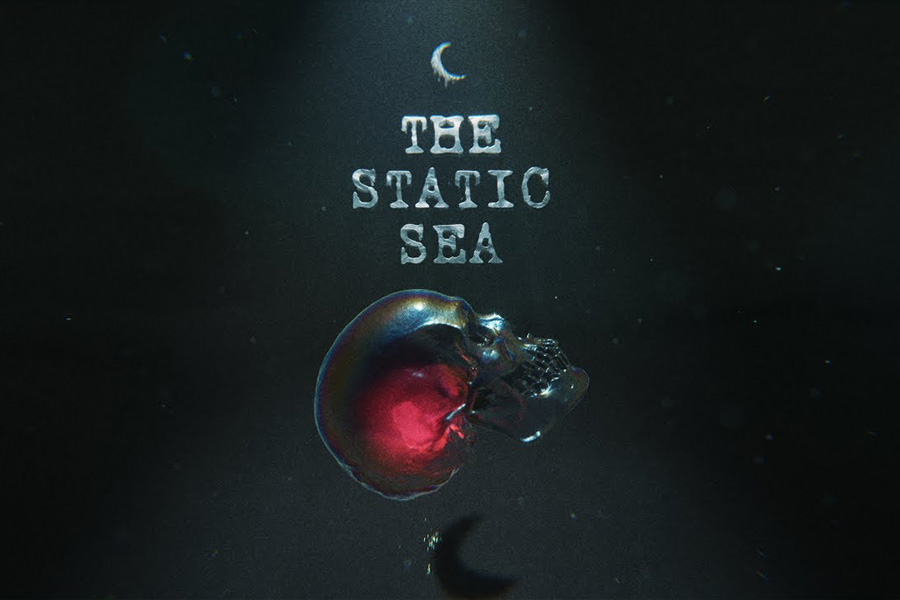
Sophie-Alicia Shaw is one of the founders of Stormjar, which specialises in darker experiences, thrillers and mysteries. Their latest project, The Static Sea, is a horror-mystery that grew from a visit to a local island in the Bristol Channel, Flat Holm.
Shaw discovered that the island had a rich local history, including a rotting cholera isolation hospital, smugglers caves, the graves of shipwrecked sailors, ghost stories about the lighthouse, and was the site of the first radio communication. Today, only a warden and few conservation volunteers live there. On the way home, Shaw met someone from the council who was looking for a way to promote the island and raise funds for conservation – and the seed of an idea was born…
Stormjar came up with the idea of The Static Sea: a twisted ghost story that combines forgotten queer WW1 history, the birth of radio and the ghosts of Flat Holm island in a blend of reality and specially created fiction.
They realised that due to limitations in accommodation on the island, they could only run the experience for six people and that tickets would cost £1,000 each. To solve this problem, they decided to work with Flat Holm’s charity to set up a lottery and a kickstarter, asking people to donate £10 to be in with a chance of winning the experience. This allows people to potentially participate regardless of income.
To make it a hybrid experience that’s exciting for people off the island too, Stormjar are also running story broadcasts on Discord that anyone can experience for free. Those on the island will also need to work together with the online community during the experience to solve the mystery, using a radio prop in a briefcase. There are also multiple ways for people to support the project on Indiegogo – for example, they can donate more to be immortalised in ghost form in the narrative, or receive a copy of the soundtrack. (You can still support the project and enter to attend here!)
Overall, the project is interesting because:
- It’s raising awareness of a special place and supporting conservation efforts.
- It’s volunteer-run, and created from a place of inspiration rather than commercialisation.
- It’s open to a range of income and participation levels.
- It’s set to run for one night only.
4. GivIng Outside Strategists An Inside Feel Of Experience Strategy
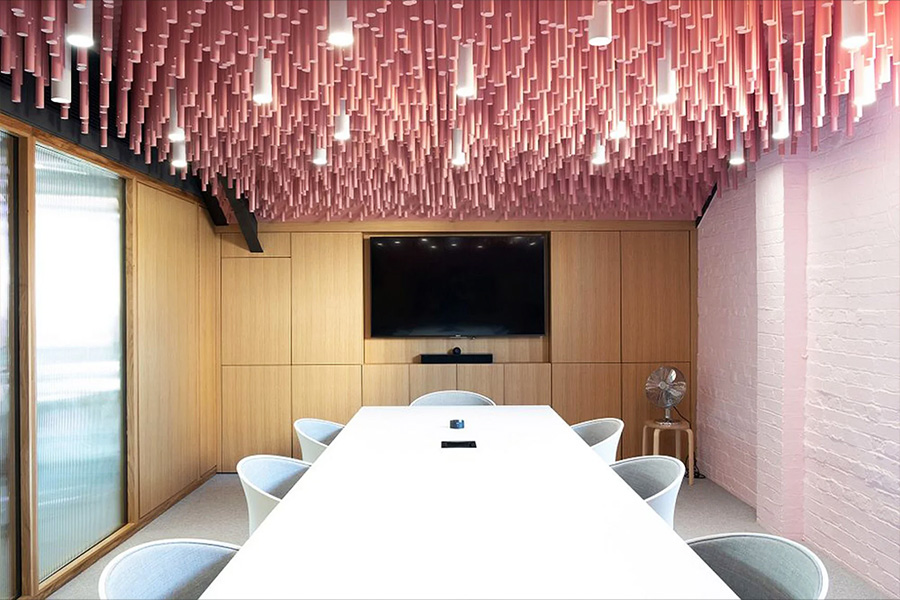
As VP Head of Strategy at experiential agency George P Johnson, Brendan Brown often works on big (budget) projects full of razzmatazz. But it was in a recent small project on a shoestring budget that he was reminded of some of the basics that lead to brilliant experience design at all levels.
Brown and his team were tasked with coming up with a 45-minute workshop for the advertising agency association festival Stratfest. The ask was to help 30-40 strategists from other verticals (such as digital, communications or planning strategy) understand where to start with experiential strategy, all on a budget of $300.
The core idea of the workshop was to show how moving from brand to experiential strategy is like moving from checkers to chess. It’s strategy in 3D, built on the dimensions of time, space, and the senses. However, Brown realised that these strategists didn’t need yet another workshop to learn these skills: they needed an experience. So, inspired by fellow GPJ strategist (and WXO Member) Andrew Lacanienta, he and his team worked to develop a THEME to get the experience going:
T: What’s the THEME? How do you bring your attendees out of their normal world and into extraordinary?
H: HARMONIZE positive cues that support your theme.
E: ELIMINATE any negative cues that might make you feel like you are not in a different place, time, or set of circumstances.
M: MEMORABILIA – how can you make the memory tangible and bestow it in a meaningful way?
E: ENGAGE all 5+ senses in a magical way.
Brown settled on a wilderness theme as an apt metaphor for going into a new world and exploring the dimensions of your craft. They riffed on a Moonrise Kingdom-inspired theme with park rangers and scouts, building out the world with props, costumes and cues like ranger hats and achievement badges, and meaningful memorabilia like an “Experience Strategy Survival Guide” complete with wax stamp.
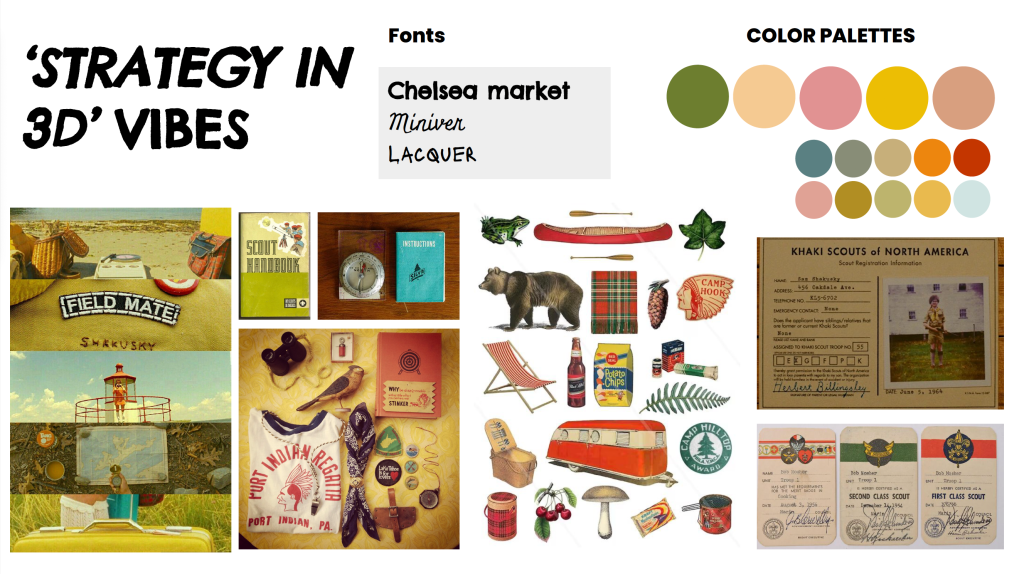
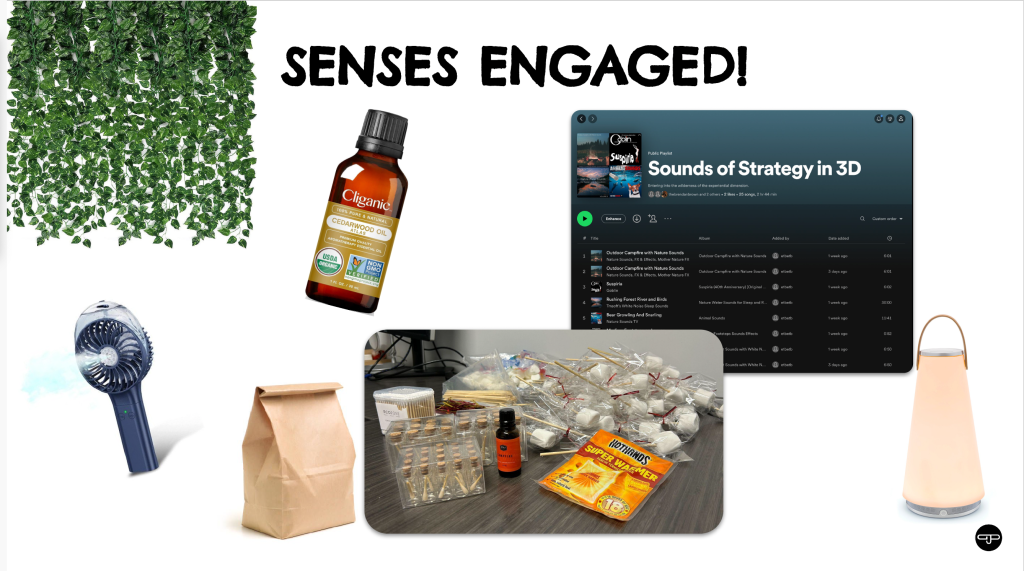
The senses were engaged throughout the experience, through simple details like a leafy entrance, scents of the wilderness and a campfire speaker with a bespoke Spotify playlist. A man in a bear suit welcomed participants to a campfire, and they were invited to put on blindfolds and listen to a soundtrack and accompanying scents as they “travelled” between places.
Each dimension of experience strategy became a destination to be visited: Time Flies Falls (to explore the flow of time and how to structure it for transformation), Deep Space Summit (to dive into placemaking), and Entangled Senses Cavern (to introduce body thinking and how to tune into embodied experiences as we design for others). Participants learned skills in each destination to earn badges, and the bear would growl to move them through each stop.
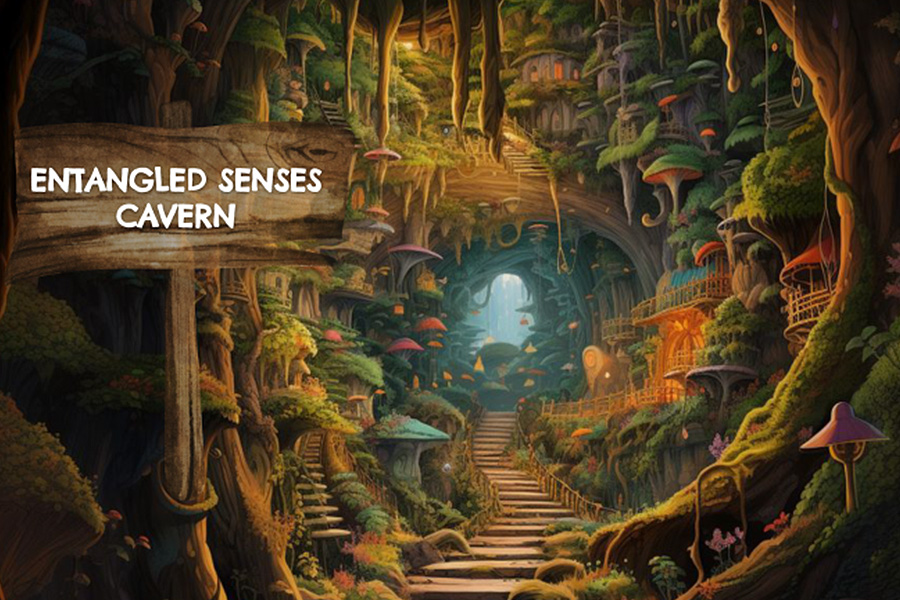
The experience gave Brown three main takeaways:
- Tap into the theme-dream cycle. He started with an idea, had to dream for a bit to get it to a theme, then had to hold onto the theme loosely and dream more to weave it back into the original intention. How do you express the theme fully and weave it back into a coherent story? How do you balance between the theme you’re designing for and the dream you have for what it could be?
- Imagination is participation. The experience was a great reminder of being scrappy, and making room for memory, imagination and emotion. All great art invites you in – by leaving a bit of space and an information gap to lure guests in, it brings their imagination into the creation of the experience. For example, a “synaesthetic picnic” containing items like matches and marshmallows invited participants to dissect the different memories that came up and emotions that were alive to them.
- Permission to play. In some settings, you have to work harder to make play okay. In B2B settings in particular, you need to give people permission to play. This is where props, opening and closing ceremonies that create a shared meaning, belonging and vulnerability, and character work helps make people feel comfortable.
5. Storytelling With META-Linear Narratives
In a previous Campfire, founder and CEO of META Justin Bolognino outlined his “Map of Realities”: a look at the digital and analogue realities that together define the experience industry. A particular quote of his has stuck with us:
“We call each of the six realities ‘the primary realities’, like primary colors. But any color alone is a little bit boring. When you start combining them together, that’s when things really get interesting.”
Justin Bolognino
So it was fascinating to get an insight into Spirit Lake, an immersive art experience that took place for the 10th anniversary of Hulaween festival and for which Bolognino did art and music production for 18 different activation worlds around a lake.
To handle the complexities of the experience, Bolognino created another map: a clock-like design that showed the different experiences happening around the lake and which came together on site as the programme was built out.
He also created a brand for Spirit Lake based on the idea of duality and life and death, which was then extended into the story. Guests entered through a cemetery representing death, with love and life represented through a wellness facility on the opposite side of the lake.
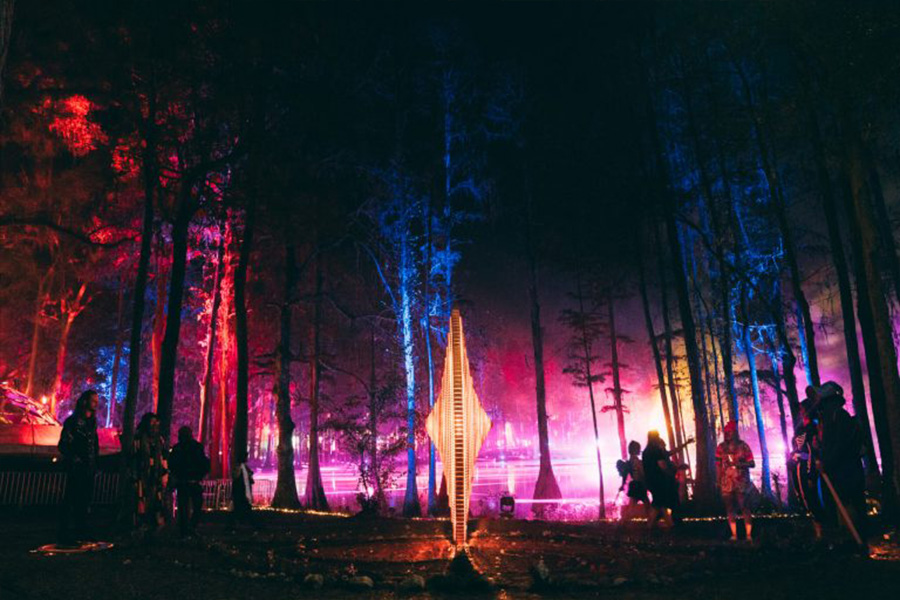
The final production was a “dance of structure and improvisation” that spanned multiple worlds, times and ideas. A few highlights included:
- An Alien mausoleum featuring a giant, interactive game of Alien Operation, which became a “joy machine”. If you managed to retrieve a lightning bolt and looked underneath it, there was a cipher to decode the alien language outside.
- A lake screen with holographic effects and a two-hour AV performance with synced lasers.
- Interactive props such as “chaterpillars” (giant caterpillars where you could talk into the mouth of one and hear through the other), spirit animals built out of recycled materials, and “bio-shrooms” that lit up different colours when touched.
- A “cosmic portal” giant wooded structure with LEDs embedded, beaming the energy of one participant into another.
- Four different stages including one designed to look like a decentralised disco ball, two different performance stages, and the House of Lost, a dark, sexy carnival/church theme.
- Eight mini worlds with a linked scavenger hunt to explore them.
- A painting programme and mural maze featuring 17 diff murals that took 5 days to paint.
“The best ROI is the look on people’s faces. And boy, were there a lot of happy faces.”
Justin Bolognino
The WXO Take-Out
Firstly, the WXO community is harbouring extraordinary creators who are pushing the bounds of innovation and experimentation to make magical things happen in unexpected places.
And secondly, that whatever your sector, there’s knowledge to be gained when we get curious about the kind of experiences that are being launched in other parts of the world and areas of specialisation.
So next time you’re designing an experience, ask yourself:
- Have you ever repurposed an “ordinary” space? If so, how did you go about it?
- Have you ever worked on or attended any immersive projects that only happened once?
- How might you translate your experience for a different cultural audience?
Want to come to live Campfires and join fellow expert experience creators from 39+ different countries as we lead the Experience Revolution forward? Find out more here.






